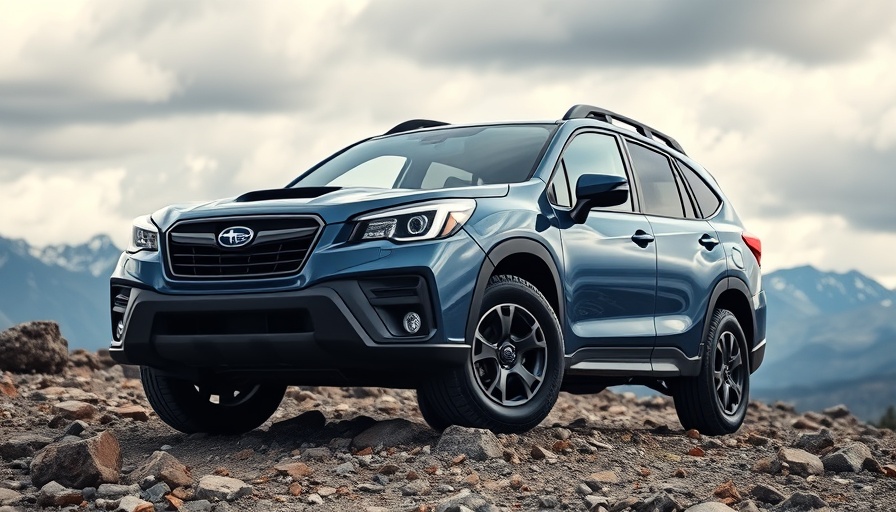
Head-to-Head Comparison of Two Off-Road Giants
The battle between Subaru and Honda has never been more intriguing, particularly with their latest mid-size offerings: the 2026 Subaru Outback Wilderness and the 2026 Honda Passport TrailSport. Both models come with an adventurous spirit, catering to outdoor enthusiasts and families alike. But when it comes to performance, capacity, and off-road readiness, how do they truly measure up?
Off-Road Capabilities: A Closer Look
Subaru's commitment to off-road adventure shines through the Outback Wilderness with its impressive 9.5 inches of ground clearance and rugged Bridgestone Dueler all-terrain tires. These features are designed to enhance stability and traction, making it a prime candidate for tackling challenging terrains. It is equipped with various off-road drive modes, allowing for adaptability in different conditions.
On the other hand, the Honda Passport TrailSport raises the bar with its robust 31-inch all-terrain tires, which are better suited for absorbing shocks from rough trails. Despite its slightly lower 8.3 inches of ground clearance, the Passport boasts superior approach and departure angles, making it agile enough to conquer steep inclines and declines.
Powertrain Comparison: What’s Under the Hood?
Underneath the hoods, the engines present contrasting philosophies. The Passport TrailSport packs a punch with a 285-horsepower naturally aspirated 3.5-liter V-6 engine, delivering responsive power and torque through its 10-speed automatic transmission. This combination doesn’t just promise power; it also provides brisk acceleration, making it a strong contender on the highway.
In contrast, the Outback Wilderness features a turbocharged 2.4-liter flat-four engine producing 260 horsepower. While it might seem less powerful on paper, Subaru’s continuous variable transmission (CVT) cleverly manages engine performance, allowing for smooth acceleration, especially in off-road situations. The Outback is also expected to offer better fuel efficiency, with estimates around 23 mpg combined, compared to the Passport's 20 mpg.
Dimensions and Design: Aesthetic and Practical Considerations
When you look at size and styling, both SUVs are designed to meet the demands of modern drivers. The Subaru Outback, with its sleek lines and distinct contours, feels more like an SUV version of a wagon while maintaining a rugged charm. Meanwhile, the new Passport offers a bolder, boxier silhouette that emphasizes its capability and robustness—appealing to those who prefer a more traditional SUV shape.
Although the Outback is slightly longer than before, the Passport offers a noticeable increase in interior space and headroom, essential for families on the go. However, both vehicles lack a third row, which keeps their design strictly two-row configurations. For those seeking to maximize cabin space, understanding these dimensions will be critical in making a selection.
Practical Insights: Your Decision-Making Toolkit
Choosing between these two outdoor-ready SUVs ultimately comes down to your lifestyle and preferences. The Subaru's off-road features and fuel efficiency may attract buyers looking for adventure without compromising on everyday usability. Alternatively, the Passport’s powerful engine and spacious interior cater to families that prioritize on-road comfort for daily commutes as well as weekend getaways.
Before making a decision, consider test-driving both vehicles to experience their handling, comfort, and technology. Assess your typical driving conditions and the environments you plan to explore. With such significant differences, one may fit seamlessly into your life where the other fails to deliver.
In conclusion, as the competition between midsize SUVs intensifies, both the Subaru Outback Wilderness and the Honda Passport TrailSport offer unique advantages depending on your driving needs. Whether you prefer rugged terrain or city streets, these models have something to offer for every driver.
 Add Row
Add Row  Add
Add 




Write A Comment